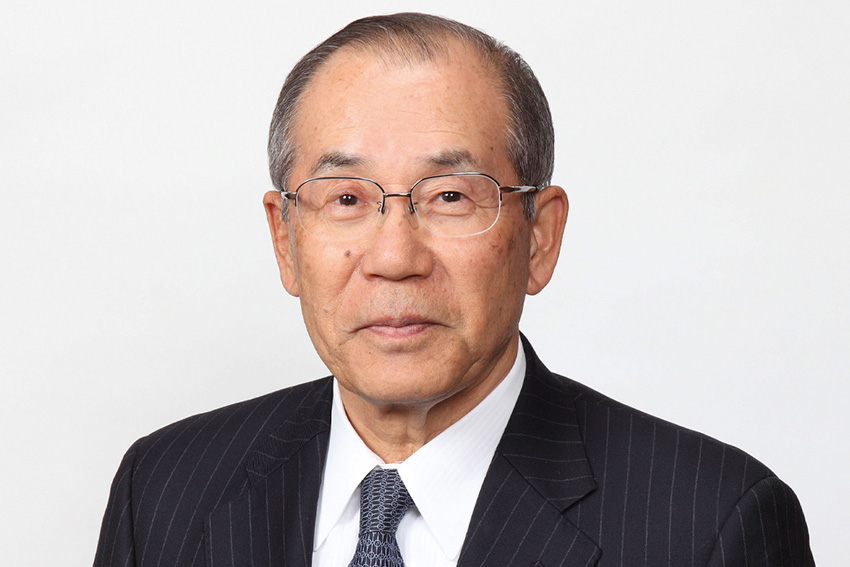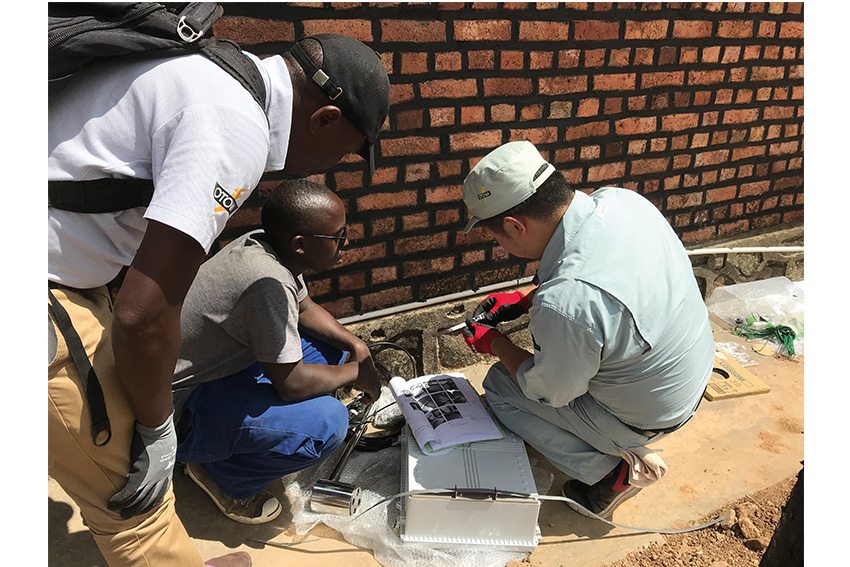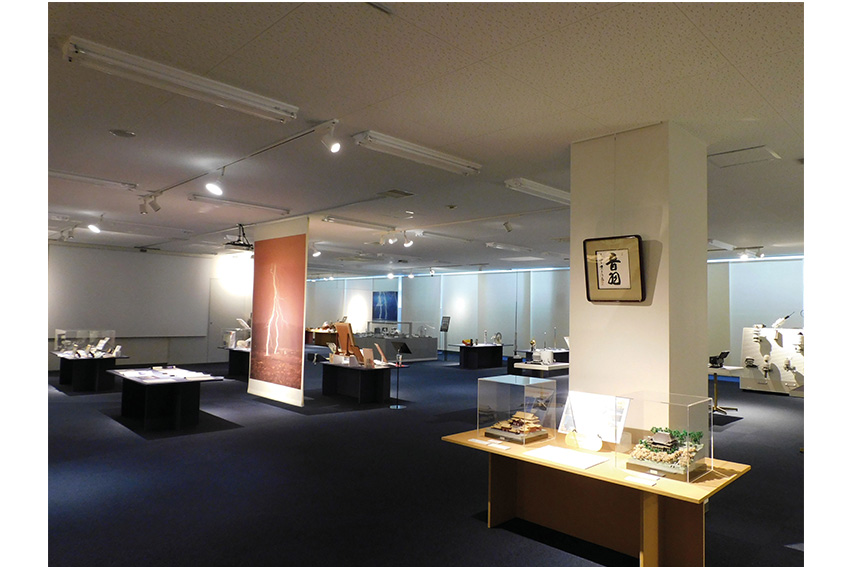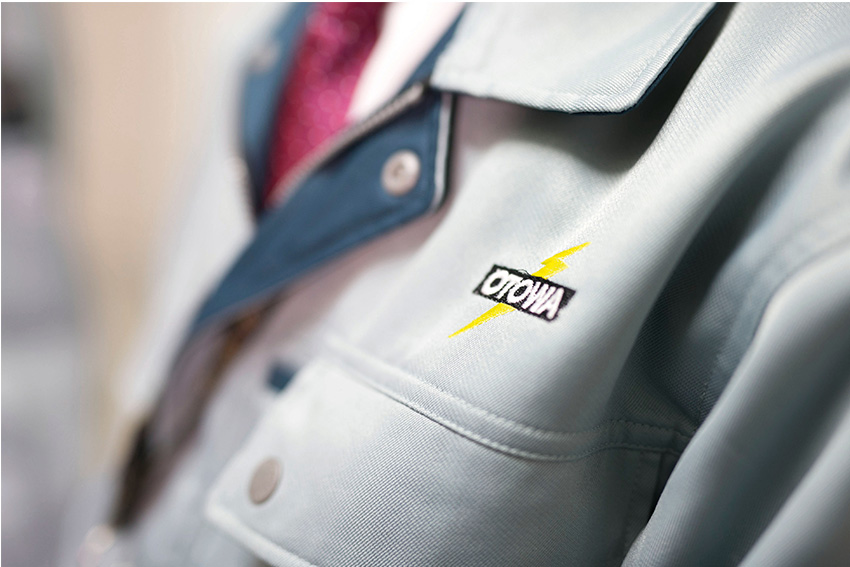With 78 years of research in lightning protection equipment and testing facilities that accurately reproduce lightning, Otowa Electric is able to offer best-in-class solutions for when lightning strikes.

Right now is a pivotal time for Japanese makers. Policies like the US Inflation Reduction Act are forcing corporations to diversify their supply chains for reliability and to reduce country risks, with nations such as China. Japan is known for its reliability, advanced technology, and a weak JPY, so for the time being Japan has never been a more cost-effective option. This means that Japanese firms have an opportunity to expand their existing global market shares. Do you agree with this sentiment, and in your opinion, what do you believe to be the advantages of Japanese companies in this current macroeconomic environment?
In macroeconomic terms, it would be different in the case of thinking globally of the market by each company. Globally or a one-country scope would lead to different ideas or concepts. We do not consider ourselves as a global company, rather we are niche, specializing in a niche market of lightning and we would like to expand our presence in this market.
With our technology we would like to go hand-in-hand with the country that we are in sync with our mindset. There are supply chain issues, and we consider the made-in-Japan brand as our weapon.
Japan is a country known for its aging population with experts predicting that by 2050 the population will dip under 100 million, which raises issues such as the labor crisis and a shrinking domestic market. How are you reacting to this demographic shift and to what extent must you look overseas to ensure long-term business success?
We have been collaborating with domestic companies with lightning technology at their core. We are the kind of company that can cater to other companies that require our products. Domestically we have focused on collaboration with academia as well as corporations. Since the population is shrinking, we do have collaborations with overseas companies, but I would say that we are more focused on prospering and cooperating together rather than doing business to expand our role overseas. In that sense, our technology is a selling point and we would like to collaborate overseas based on that mindset. Ideally, we are looking to learn technology together and be on the same footing with overseas parties as the situation continues to decline domestically.
The character of Japanese people is to value hospitality and this has been highly evaluated by overseas countries. This characteristic is a good starting point to begin relations with overseas companies. We put value on human relations, networking, and relationships overseas, which brought us profit eventually.
Our company is seeking long-lasting relationships with overseas companies. One example of this in action is in Rwanda, where we did not seek profit, rather we were looking to support the exchange of technology. In Rwanda, there was a request to learn about our lightning technology, and we began providing this technology as a starting point. We do not make a profit there at present, there are now three engineers there who are providing seminars on lightning technology, which helps us to create deeper relations there.
The relationship begins with this and I think we can get a better idea of how to deal with the issues of the decreasing and aging population naturally.

Activities in Rwanda
The surge protection device (SPD) market was valued at USD 3 billion in 2022 and is expected to grow at 7% until the end of the decade. How do you foresee the growth for your firm in the next 12 months and what factors do you believe will be significant in driving that growth?
Electricity is a necessity in almost every aspect of daily life, and in some advanced technological fields such as semiconductors, for example, there are products that are weak to lightning surges.
Therefore, all products that utilize electricity need some sort of measure against lightning.
As the usage of electricity increases so does the need for SPDs. Our core business focuses on products that cater to this specific need.
We don’t necessarily compete fiercely in this market, rather we are focused on the necessity of our products. When a market is established there is also going to be competition that emerges in order to capture the market, and our company is particularly focused on how we can cater to the specific needs of each customer in each different industry. This has allowed us to provide products that are suitable for each industry that we cater to. Communication and training on how to provide suitable products for this industry are key points going forward.
It is important to let people know the measures that exist that counter the damage lightning can cause, and for this purpose, we established our Lightning Technology Center.
This facility can replicate a natural setting with 99% accuracy. We also have a lightning museum and invite people to visit here in order to raise awareness as well as educate people about the countermeasures against lightning.
This laboratory was established in 2008 as was the museum too. Interestingly, 25,000 people have visited the museum so far and this includes regular high school trips. This will lead to showing our presence and in fact, for 2024 our sales are predicted to increase.
Unfortunately, with increased market comes increased competition, dealing with cost competition is becoming a challenge.
We do have trainees from Asia who were invited by the Ministry of Economy, Trade, and Industry as well as the Japan International Cooperation Agency (JICA). OTOWA has accepted many trainees from all over the world including Southeast Asia, Africa and Europe, which means we willingly communicate with other countries’ people.

Otowa museum
You mentioned how important it is to address various needs and diverse applications that you find in environments, from low-voltage to high-voltage applications, your market requires versatile and adaptable SPD. Can you provide some insights into the latest technological innovation or advancements in lightning protection device products and how that can address the emerging challenges that you can come across in these fields?
High-voltage and low-voltage products are obviously quite different and therefore are taken care of by different companies. We are a very unique company in that we can deal with both high-voltage, low voltage, as well as signal use. We are an integrated company, something quite unique globally. I think this is a specific strength of our company. We have to account for the general usage of electricity, and to that end, we have a variety of engineers who specialize in different fields.
This can be in the fields of chemicals, ceramics, high-voltage, low-voltage, communications, testing equipment and engineering. We hire different engineers and take care of issues flexibly.
Another strength of our firm is our guarantee in terms of our product quality. With this quality being so high it is important to have the right evaluating facility or test center. Our R&D laboratory is for that purpose, and we are always striving to put in the right capital investment and update the facilities to cater to new technologies whenever it is necessary.
With this in mind, we have established our internal testing system for technical evaluation and this is a key strength of OTOWA Electric.
The R&D laboratory that we have been talking about today specializes in replicating lightning conditions, and we believe that this is the only test center of its type in Asia.
Recently we had communications with the US and learned that there isn’t a center like it in the US, Europe, and South America either, so we believe at this point that there isn’t a center that specializes in replicating lightning like ours in the whole world.
You recently released your Lightning Detector which implements an efficient maintenance strategy to allow for accurate lightning detection on wind turbines. What challenges did you encounter throughout your development process and how is this product’s functionality fine-tuned for optimal safety for wind turbine protection?
We have a basic system configuration which is mostly based on the requirements of customers. They then further customize our products and engineers will ask them their requirements before modifying and delivering a customized product.
We feel a need to cater to both the economical and safety aspects for our customers, and therefore it is important to increase the accuracy of technology for detecting lightning strikes.
This is a core principle that our engineers are honing in on. For our products, we design and develop by ourselves, but in order to do that effectively we have introduced the technology of other companies as well as the expertise of academic institutions. This is all in pursuit of increasing our rates of lightning detection.
When lightning strikes, the control terminal has functions of both on and off, and immediately after the strike is switched to the off position. Sometimes turbines can be broken when the lightning strikes. If the broken turbines continue to operate, broken pieces may split and cause damages or even harm people. This is very dangerous. Thus, when lightning strikes a windmill, it is necessary to stop it in order to check the safety first.
Customers (windmill firms) operate safely using a lightning detector, which sends signals and notifications when it detects the lightning.
Obviously they stay safe from lightning damage with this product, however time loss translates as a loss of opportunities for them. The longer it is, the worse it is. Therefore, the lightning detector has to work without malfunctions. It is important to avoid malfunctions as well as increasing its accuracy, which provides customers satisfaction through our good quality product. This is one of the reasons why we’ve made efforts to improve the accuracy and take measures against erroneous noise.

Otowa’s uniform
Another of your products is Power Line Type 1 and Type 2. How are your SPD products able to achieve effective coordination and modularity to address the diverse needs of single, triple, and direct current (DC) power supplies?
There are different types of power lines, power voltage, and wiring. Our product is a common base and then we insert different types on top. The main unit can exchange different voltages, but the size of the unit is common. Basically, we are in possession of designs that can change the configuration.
Your firm is not only working in Japan, but also in Rwanda as just one example. Where is next for OTOWA Electric? Where would you like to strengthen and continue your international expansion in the years to come?
In Rwanda, there are many places that do not have electricity. Surprisingly, however, telecommunication networks are very common and 80% of the population has mobile phones. In fact, people there use their phones for payments rather than an actual phone.
In Rwanda there are many products made in China and those products are easily broken. Chinese people tend to replace the products if broken, but the people of Rwanda want to know why these products broke. This is something we can educate them about. We can respond to their need to understand the technology to prevent products from breaking when lightning surges occur.
Our products are for everywhere and anywhere, regardless of the country. In terms of answering your question, I think Southeast Asia is a prime candidate. This area has high occurrences of lightning and we see a benefit to the exchange of technology and information with companies and academic institutions in the region.
We have a company in South Korea and this started because locals wanted our technology. This led to us creating a local company in South Korea.
Imagine that we come back and have this interview all over again in 2 years. What goals or dreams would you like to achieve by the time we come back for that new interview?
I turned 82 years old this year, and my employees are much younger than I am. We try to focus on hiring those in their 20s and 30s in order to build a team of engineers who can strive to further technology in the lighting business.
Our R&D center is something we are very proud of and it is a shining example of the accumulation of technology and expertise over 78 years. We are now asking the younger generation to consider how they can take this accumulated technology into the next generation and expand the technology to continue to build trust with customers.
The last point I would like to make today is that lightning technology is very niche. We have made significant efforts to create very deep research for 78 years. With these efforts and our technology, we would like to move our company forward to different areas aside from lightning in order to develop new businesses.
0 COMMENTS